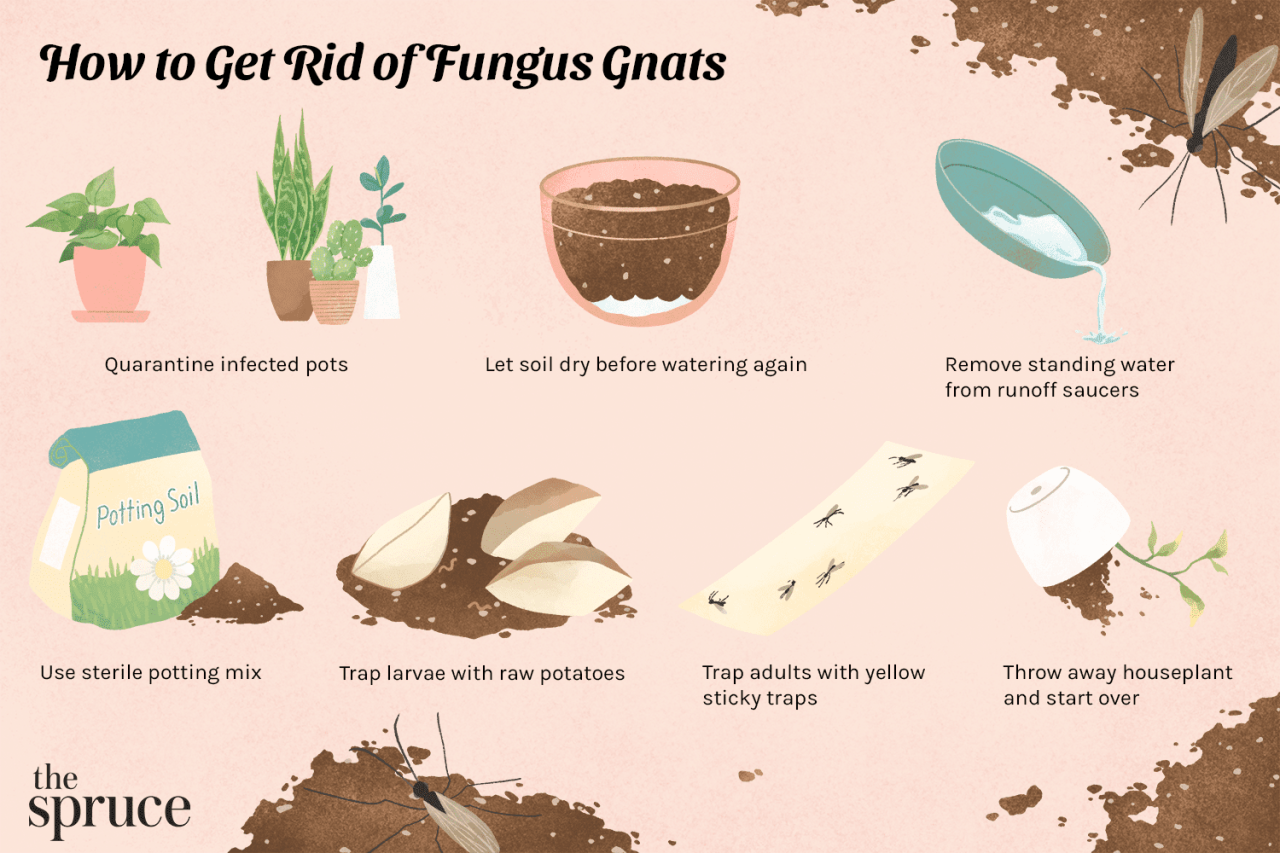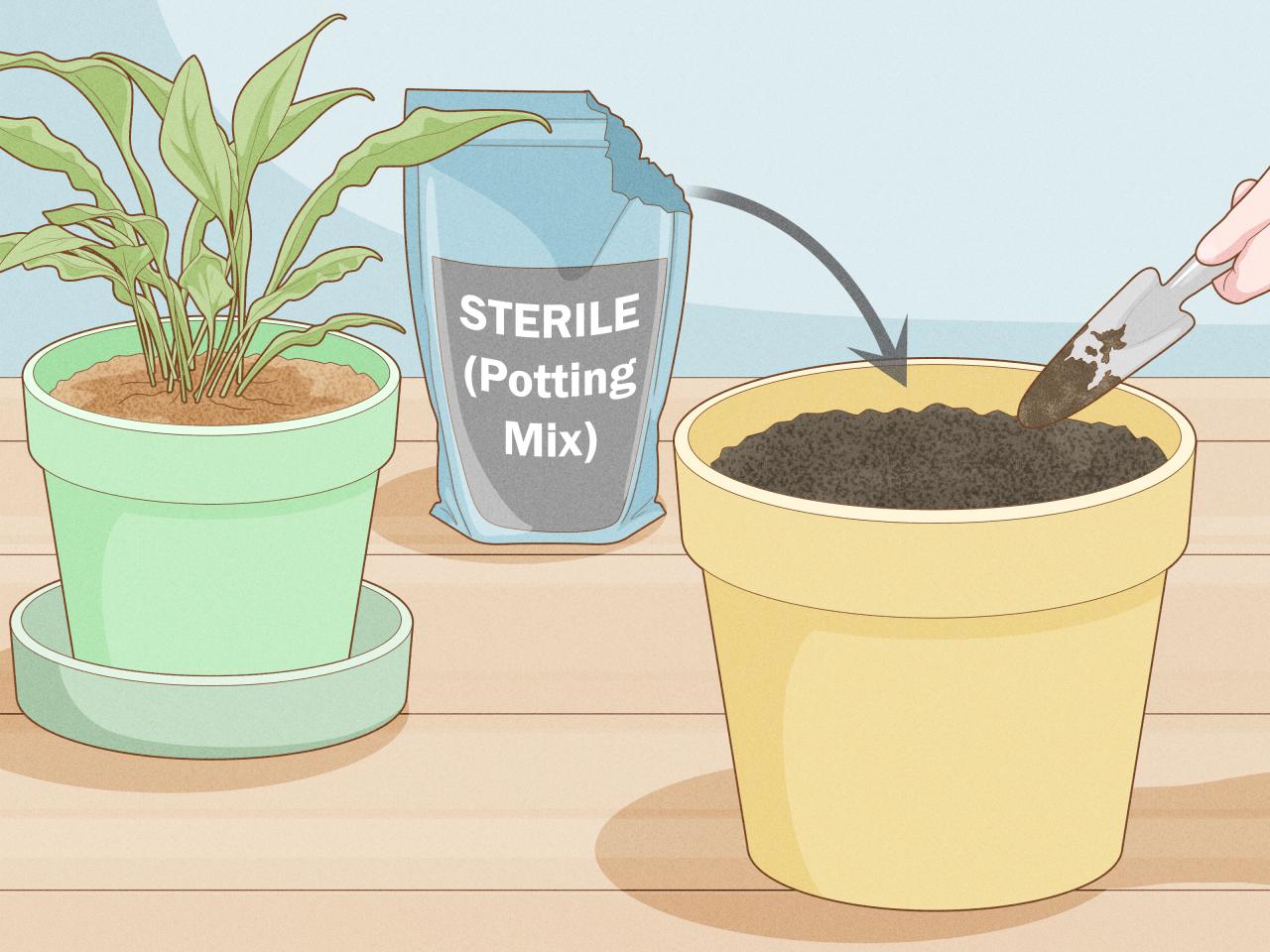How to Properly Water Plants to Prevent Gnats sets the stage for this enthralling narrative, offering readers a glimpse into a story that is rich in detail with search engine journal author style and brimming with originality from the outset.
Fungus gnats, those pesky little flies that buzz around your houseplants, can be a real nuisance. Not only are they annoying, but they can also damage your plants by feeding on their roots. Fortunately, there are steps you can take to prevent and control gnat infestations.
Proper watering techniques are key to keeping these pesky insects at bay. By understanding the life cycle of gnats and their preferred breeding grounds, we can learn how to adjust our watering practices to create an environment that is less hospitable to these unwelcome guests.
Understanding Gnats and Their Attraction to Plants

Fungus gnats are tiny, black flies that are a common nuisance for houseplant owners. While they are not harmful to humans, they can be a nuisance and damage your plants. Understanding their life cycle and what attracts them to your plants is crucial for effective control.
The Life Cycle of Fungus Gnats
Fungus gnats go through a four-stage life cycle: egg, larva, pupa, and adult.
- Eggs:Female gnats lay their tiny, white eggs in moist soil. They are usually found in clusters near the surface of the soil.
- Larvae:After hatching, the larvae are small, white, and worm-like. They feed on decaying organic matter in the soil, including roots.
- Pupae:The larvae eventually transform into pupae, which are brown and resemble small cocoons. They remain in the soil for several days before emerging as adults.
- Adults:Adult fungus gnats are small, black flies with long legs and antennae. They live for about a week and their primary purpose is to mate and lay eggs.
Signs of a Gnat Infestation
Several signs can indicate a gnat infestation in your houseplants.
- Flying gnats:The most obvious sign is seeing small, black flies hovering around your plants, especially when you water them.
- Larvae in the soil:You might notice small, white, worm-like creatures moving in the soil, especially near the surface.
- Yellowing or wilting leaves:Gnat larvae can damage plant roots, leading to yellowing or wilting leaves.
- Black spots on leaves:The gnats’ droppings can leave black spots on leaves, especially when the infestation is severe.
Environmental Factors Attracting Gnats to Plants
Several environmental factors can attract fungus gnats to your plants:
- Overwatering:Gnats thrive in moist environments, so overwatering your plants can create a breeding ground for them.
- Excessive organic matter:Too much organic matter in the soil, such as compost or peat moss, can provide a food source for gnat larvae.
- Warm temperatures:Gnats are more active in warm temperatures, so they tend to be more prevalent during the spring and summer months.
- High humidity:Humid environments, such as those found in bathrooms or kitchens, can also attract gnats.
Proper Watering Techniques for Gnat Prevention
The key to preventing gnats in your houseplants lies in understanding their attraction to damp soil and consistently applying proper watering techniques. Overwatering is a primary culprit, creating a breeding ground for these pesky insects. By mastering the art of watering your plants correctly, you can effectively discourage gnat infestations and keep your indoor greenery healthy.
One of the best ways to prevent gnats in your home is to avoid overwatering your plants. While some plants prefer a consistently moist environment, others thrive on a more hands-off approach. If you’re looking for low-maintenance, pet-friendly options, consider hanging plants, which often require less watering and can be hung out of reach of curious paws.
For inspiration on the best hanging plants for pet owners, check out this comprehensive guide. By understanding the watering needs of your plants and choosing appropriate varieties, you can keep your home free of gnats and enjoy beautiful greenery.
Ideal Watering Frequency and Amount
The frequency and amount of water your plants need depend on various factors, including plant type, pot size, and environmental conditions.
- Plant Type:Some plants, like succulents and cacti, require less frequent watering than others, such as ferns and orchids. Succulents thrive in dry conditions, while ferns prefer consistently moist soil.
- Pot Size:Larger pots retain moisture for longer periods, requiring less frequent watering compared to smaller pots.
- Environmental Conditions:Factors like temperature, humidity, and light levels affect the rate of soil drying. Plants in warmer, humid environments may require more frequent watering than those in cooler, drier conditions.
Importance of Allowing Soil to Dry Out
A crucial aspect of gnat prevention is allowing the top inch or two of soil to dry out between waterings. This prevents the soil from becoming waterlogged, which attracts gnats and can lead to root rot.
Using the Finger Test
The “finger test” is a simple and effective way to determine if your plant needs watering.
- Insert your finger about an inch into the soil.
- If the soil feels dry, it’s time to water.
- If the soil feels moist, wait a few days before watering again.
Soil Management for Gnat Control

The type of potting mix you use plays a crucial role in preventing gnat infestations. Well-draining soil is essential for preventing gnats from thriving in your plants. Gnats are attracted to moist, decaying organic matter, and poorly draining soil creates the perfect breeding ground for them.
One of the best ways to prevent pesky gnats from invading your home is to ensure your plants are properly watered. Overwatering creates a moist environment that attracts these insects. While gnats are a common problem year-round, they can be particularly bothersome in the summer when you’re more likely to be enjoying your outdoor spaces.
If you’re considering adding some hanging plants to your home, the best time of year to buy hanging plants is in the spring or fall when temperatures are cooler and the plants are less stressed. By avoiding overwatering, you can keep your plants healthy and prevent those annoying gnats from taking over.
Improving Soil Drainage
Using a well-draining potting mix is the first step in preventing gnat infestations. You can further improve soil drainage by incorporating amendments like perlite, vermiculite, or other materials that increase aeration and reduce compaction.
- Perlite: This lightweight, volcanic glass material provides excellent aeration and drainage, helping to prevent waterlogging. It also improves the soil’s structure, allowing for better root growth.
- Vermiculite: A mineral that expands when heated, vermiculite provides excellent water retention and drainage. It also helps to improve the soil’s structure, making it easier for roots to grow.
- Coco Coir: This natural fiber derived from coconut husks is an excellent alternative to peat moss. It provides good drainage, aeration, and water retention, making it a suitable amendment for most potting mixes.
Comparing Potting Mixes
Here’s a table comparing different potting mixes and their suitability for gnat-prone plants:
Potting Mix |
Drainage |
Aeration |
Water Retention |
Gnat-Prone |
|---|---|---|---|---|
Peat Moss Based |
Poor |
Poor |
High |
Yes |
Coco Coir Based |
Good |
Good |
Moderate |
No |
Soil-Based |
Moderate |
Moderate |
Moderate |
Moderate |
Additional Measures for Gnat Prevention
While proper watering techniques and soil management are crucial for preventing gnats, there are additional measures you can take to create a gnat-free environment. These methods focus on trapping and deterring adult gnats, as well as preventing them from entering your home.
DIY Gnat Traps
Creating a DIY gnat trap is a simple and effective way to control adult gnats. This method leverages gnats’ attraction to fermented substances.
- Materials:A shallow dish, apple cider vinegar, dish soap
- Instructions:Fill the dish with apple cider vinegar, add a few drops of dish soap, and place it near your plants. The vinegar attracts the gnats, while the soap breaks the surface tension of the vinegar, preventing them from escaping.
This method is particularly effective for catching gnats that are already present in your home.
Yellow Sticky Traps, How to Properly Water Plants to Prevent Gnats
Yellow sticky traps are a visual method for monitoring and capturing adult gnats. These traps use the color yellow, which attracts gnats, and a sticky surface to trap them.
- Placement:Place the traps near your plants, where you have seen gnats, or in areas where they are likely to congregate, such as near windows or doors.
- Monitoring:Regularly check the traps to assess the gnat population and replace them when they become full.
These traps can provide valuable information about the severity of the gnat infestation and help you track the effectiveness of your prevention efforts.
Preventing Gnat Entry
Gnats can enter your home through various entry points, including open windows, doors, and cracks in the foundation.
- Sealing Entry Points:Inspect your home for any cracks or gaps around windows, doors, and the foundation. Seal these openings with caulk or weather stripping to prevent gnats from entering.
- Using Screens:Ensure all windows and doors have working screens to prevent gnats from entering. Regularly check the screens for tears or holes and repair them promptly.
These measures create a barrier against gnats and reduce the likelihood of them establishing a population in your home.
Closure
By following these simple tips, you can effectively prevent and control gnat infestations in your houseplants. Proper watering, well-draining soil, and additional preventative measures can help create a healthier environment for your plants while keeping those pesky gnats at bay.
Remember, a little attention to detail can go a long way in keeping your houseplants thriving and free from unwanted pests.
FAQ Corner: How To Properly Water Plants To Prevent Gnats
What are the signs of a gnat infestation?
You may notice small, black flies hovering around your plants, especially near the soil. You may also see tiny white worms or larvae in the soil.
What kind of soil is best for preventing gnats?
Choose a well-draining potting mix that contains perlite, vermiculite, or other amendments to improve drainage. Avoid using heavy, clay-based soils that retain too much moisture.
What if I already have a gnat infestation?
There are several methods to control an existing gnat infestation. You can try using beneficial nematodes, insecticidal soap, or neem oil. You can also use a DIY gnat trap to catch adult gnats.
